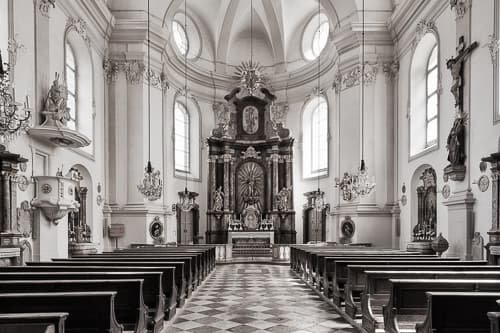Underground At Seegrotte, Austria
An intimate shrine at Seegrotte, the underground lake near Hinterbruhl, Austria.
The underwater lake at Seegrotte, 30 minutes drive from Vienna, is a fascinating experience that’s steeped in history.
Seegrotte shares the title of being the largest underwater lake in Europe with Saint-Léonard in Switzerland.
As to which is larger I know not, but I have visited Seegrotte and can recommended it as a fun place to explore and photograph.
You can reach Seegrotte, via a pleasant drive through the Vienna Woods, from the capital Vienna.
This photo depicts a shrine to miners who had lost their lives onsite. I think of it as a Shrine To The Fallen.
As you can see the little light there was illuminating the shrine was quite eerie, being produced by a mixture of artificial light sources.
As I didn’t have a tripod with me I had to push the ISO up to 3200 to achieve the 1/30 second @ f/4 exposure.
It’s actually quite an old photo, going back to 2011, which means the quality of the image would be much cleaner and crisper if I’d been able to make it with a newer camera.
Nonetheless, the story of this place impresses me and I want to share it with you here.
Eerie light illuminates the huge and mysterious underground lake at Seegrotte, Hinterbruhl.
Seegrotte - An Experience Full Of History
Seegrotte is situated underneath a former Gypsum mine inside a mountain near the town of Hinterbruhl, Austria.
The lake was formed when the ceiling above collapsed flooding the cavern with 20 million litres of water.
The lake, part of an underground cave system, is 60 meters (i.e., 197 feet) below ground. So, even though I visited on a very warm summer’s day, it was cold inside the mountain.
I visited the mine as part of a tour which included a boat ride across the underground lake.
It reminded me of the lake below the goblin tunnels where Bilbo first met the creature Gollum in J.R.R. Tolkien’s classic novel, The Hobbit.
But this place goes beyond mining and Middle Earth fantasies.
During World War II Nazi Germany used the site to build the world’s first jet fighter, the Heinkel He 162.
The secluded location of the Seegrotte mine provided a degree of secrecy and security for the project at a time when the Nazi war machine was under huge pressure from the Allies.
The history of Seegrotte continued after WWII. In 1993 it featured in the Hollywood film The Three Musketeers staring actors Charlie Sheen, Kiefer Sutherland and Chris O’Donnell.
While I’m not one for formal tours that aren’t based around the needs of photographers I have undertaken a handful of half and one day tours.
Generally I undertake the tour out of necessity and sometimes to gauge how operators run such tours.
It’s an interesting learning experience, though a terrible compromise when it comes to making photos. Still it’s better to be there, then not at all.
In the case of my visit to Seegrotte it was part of a one day tour which included a visit to the beautiful Heiligenkreuz Abbey, entry to which is only allowed as part of a group tour.
One thing you'll need to be aware of is that, even in the height of summer, it's extremely cold in the subterranean caverns at Seegrotte.
Come prepared with a down or fleece jacket, a beanie and long pants and enjoy the experience.







